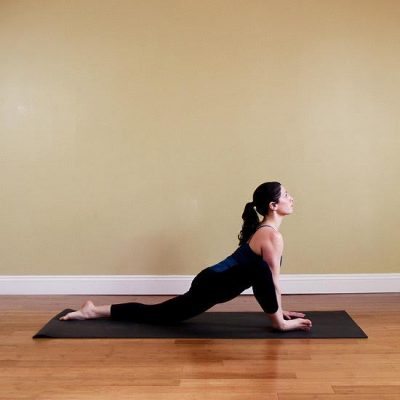I remember as a kid swinging on a swing in a park, leaning back and watching the sky trade places with the upside down trees. First there were the years of having someone push you “higher, higher!” I would cry. Then I learned how to pump my legs back and forth, pulling on the chain or rope, getting it to bend a bit to help me swing in the widest arc possible. And then you stop. You stop moving your legs, stop pulling on your hands and let the swing rise and fall without your help. That is the sweetest swing of all. You have let go, you have surrendered. You are going with the flow.
This is what recovery has been like: at first I relied totally on others, then I learned to take more responsibility for myself, and now, from time to time, I can let go and be moved through life with ease. Now the swing analogy only gets you so far; sometimes the weather is bad, the swing is broken, or you have to wait in line. But overall; I work, I rest.
Hatha yoga is designed to help you recognize effort and ease, strength and stability, growth and grounded-ness. There are active yoga classes, challenging yoga classes, classes that summon your strength and endurance. There are others that may be equally challenging in that they are quiet, slow and meditative, that allow you to confront your ability to be still. It is these latter classes that can offer you and your body a place to surrender.
Restorative and yin yoga classes present poses that use a variety of support in order to safely hold poses for 2 to twenty minutes. You do them in the spirit of non-harming protecting your body while you accept the posture.
In a yin yoga class you may be in poses which are less supported and held on the shorter side of the time continuum; there is still an amount of work for you to do. You are investigating long stretches that get deep into your joints and sinew. They may not all be comfortable and you investigate your feelings in that process of giving in and letting go.
Here is an example of a yin yoga poses, gecko.
- Get two blocks or a bolster or a rolled up pillow and put it at the front of your mat.
- Come to a modified lunge, back knee on the mat, both hands on the mat on the inside of your front leg.
- Angling your front foot toward the corner of the mat, you flex that foot, then rock the forward knee to the side onto the outer blade of the foot.
- Stay there for five long deep breaths.
- Using block or a thick bolster place your forearms on the support and stay there for ten breaths.
- You may remain there or remove the supports and bring your forearms to the floor.
- Continue to breathe until you have been in some form of this posture for two minutes.
- Reverse the process to come back to both hands on the mat and the knee upright.
- Swing the front leg around behind you, both knees on the mat and push back to child’s pose; hips to the heels, arms on the ground in front of you and the head on the mat or a block.
- Repeat on the other side.
Restorative yoga classes offer all sorts of support for the body: bolsters, blankets, blocks, and belts. You arrange yourself in a pose finding a way to prop your body so that you are experiencing the least amount of effort. You remain in the pose for five to 20 minutes. The challenge here is to surrender the mind. The chattering mind may become lost in “shoulds” or “do more”, “move more” or be lured into stories from the past, planning for the future. This is a yoga of surrender to the now.
An example of a restorative yoga pose is back-lying pose in butterfly.
- You will need a block, a bolster and one to three blankets (or towels.)
- Put a block on its largest side at the top of the mat.
- Put the bolster lengthwise down the mat with one end propped up on the block.
- Lay a blanket folded into layers about 4 inches high on the end of the bolster that is on top of the block.
- Have the other 2 blankets on either side of the mat to use if you need them.
- With your bum on the mat, the low back at the bolster ramp, bend both knees feet flat on the floor.
- Hold behind your thighs and let yourself lie back on the bolster ramp using the blanket at the top as a pillow.
- Be sure your neck is comfortable, neutral to all feelings.
- Once situated bring the soles of your feet together and drop your knees apart in butterfly pose.
- Support each knee with a folded blanket if that allows you to surrender more completely.
- Set a time for ten to twenty minutes and see what happens.
- To come out, bring the knees together, roll to one side, reach behind yourself and scoop the props away.
- Roll back on the flat map without the props for a few breaths and come back to the present moment.
Either releasing yourself into the care of the pose – as in restorative, or moving your legs to swing yourself, as in yin yoga you are challenged to let go, to surrender, in order to face resistance in yourself, meet it and release it. The physical practice of yoga can show you how.








2 Comments
Hello. This is a great example of surrender. As I move forward and deepen my practise with continued sobriety. I hope to read more work such as this. It is a journey and I am grateful to learn about 12 steps and Yoga combined.
I am so happy you enjoyed this combination – there will be more to come. Be well